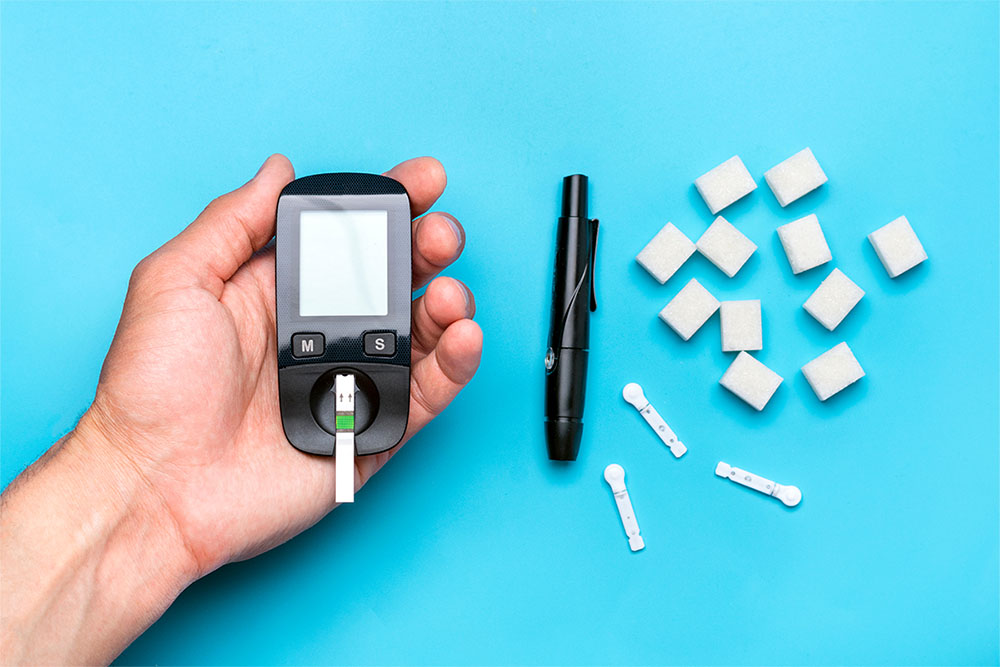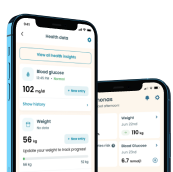What Are the Warning Signs of Prediabetes?
There’s always a precursor to everything, including certain chronic illnesses like diabetes. Usually, most people diagnosed with diabetes have been predisposed to the condition due to their unhealthy habits, certain medical conditions, or genetics.

There’s always a precursor to everything, including certain chronic illnesses like diabetes. Usually, most people diagnosed with diabetes have been predisposed to the condition due to their unhealthy habits, certain medical conditions, or genetics.
A condition known as prediabetes is what’s experienced before the significant illness steps in. Patients can live with this condition for years unknown to them, and sometimes if no changes in lifestyle are made, it morphs into diabetes.
There are lots of ways to know if you have prediabetes. In this regard, it’s vital to take note of specific symptoms and perform regular tests to be in the know about your health condition. Early knowledge about a prediabetes condition can be incredibly helpful in managing the disease and even reversing its effect.
In this guide, you’ll discover those symptoms that indicate a prediabetes condition. You’ll also learn what the risk factors of prediabetes are. Other sections cover how to manage the condition and reverse it.
What to Expect
- What Is Prediabetes?
- What Causes Prediabetes?
- Common Signs and Symptoms of Prediabetes
- Prominent Prediabetes Risk Factors
- Tests to Determine Prediabetes
- Prediabetes Complications
- Managing and Reversing Prediabetes
What Is Prediabetes?

Prediabetes occurs when too much sugar exists in your body but not enough to count as type 2 diabetes. Typically, an individual is said to have diabetes when their blood sugar level sits at 200 mg/dL or above. However, if your blood sugar level reads between 141 and 199 mg/dL, you might have prediabetes.
Statistics show that an incredible amount of the US adult population has prediabetes. As of 2019, about 96 million adults aged 18 and above had this condition.
As common as this illness is, many are unaware they’re living with it. According to the CDC, over 80% of people with prediabetes don’t know they have it. Usually, it doesn’t show symptoms until it becomes severe or has developed into type 2 diabetes.
When left untreated, prediabetes can cause significant long-term damage to key organs like the heart or kidneys. It can as well affect blood vessels and other body parts. Because most individuals have no idea they have this condition, they don’t make the essential lifestyle changes that can help them manage it.
However, one can reverse, or better still, manage prediabetes when diagnosed early. Early diagnosis can also help ensure prediabetes doesn’t progress into type 2 diabetes. Hence, the need to watch out for some obvious signs or symptoms that may indicate prediabetes.
What Causes Prediabetes?

The body runs on glucose as its primary source of fuel. It gets this fuel primarily by breaking down carbohydrates. After breaking down carbs into glucose, they’re pumped into the bloodstream, and the excess gets stored. With the help of the hormone “insulin,” secreted by the pancreas, glucose is transported into the cells to provide the needed energy.
However, with a condition like prediabetes, your body doesn’t respond appropriately to insulin, prompting the pancreas to make more of it to meet the body’s demands. With a large amount of insulin left unused, the pancreas tires out and stops producing more. Hence, most glucose remains in the bloodstream, as it’s not used by your body cells.
When this happens, blood sugar rises, translating into a prediabetes condition. Over time, when left untreated, prediabetes can eventually transform into type 2 diabetes. At this stage, it might be too late to reverse the condition.
Common Signs and Symptoms of Prediabetes

Prediabetes can be considered a silent disease that can increase the risk of developing cardiovascular illnesses like heart disease, stroke, etc. This is because it rarely indicates any signs or symptoms in its early stage, making many patients unaware of this condition.
However, depending on the severity of prediabetes, patients tend to show specific symptoms. Although some of these symptoms can also point to other ailments, they’re worth confirming with your doctor. Worthy of mention is that these symptoms are much similar to diabetes symptoms.
Here are some of the early signs that may point to prediabetes:
Increased Hunger
With a condition like prediabetes, your body either lacks insulin or can’t utilize the available one. When your body doesn’t respond to insulin as it should, it leaves a lot of glucose in your bloodstream. This causes your body cells to starve due to limited or no access to the much-needed glucose.
The absence of glucose to fuel your body cells makes them weak. Hence, your brain signals you to eat more so the cells can get the energy they need. This makes your body crave more food, even after eating a large serving. It just feels like you aren’t getting enough.
Excessive hunger is one of the significant symptoms of prediabetes you want to look out for. Although, your body tries to compensate for the lack of energy in the cells by taking in more food. Unfortunately, they also get stuck in the bloodstream, raising the sugar in your system even more.
Overeating can have other dire consequences on your health, such as impaired brain function and increased body fat.
Frequent Urination
Sugar isn’t meant to be in the bloodstream in high amounts for an extended period. Hence, when the body can’t use all the excess glucose, it naturally tries to get rid of it.
Your kidney works to ensure balance in bodily fluid. With a condition like prediabetes, too much sugar exists in the blood that the kidney tries to absorb significantly. To get rid of them, it passes the excess sugar to the bladder, filling it with fluid to eject the sugar. This prompts the body to urinate more often than usual.
The average human urinates an average of 5 times per day. While some people visit the stall less than three times daily, others can go about seven times daily. However, when you start peeing more than seven times a day, it might be an indication of prediabetes.
Frequent urination has a strong correlation with diabetes. The process also takes its toll on the kidney, making the individual more susceptible to chronic kidney disease.
Increased Thirst
To get rid of the excess sugar, the body extracts fluid from the body, which the bladder uses to flush the sugar out of the system. Consequently, as you expel more fluid, your body experiences dehydration. Hence, the body shows signs of dehydration from a lack of fluids. When you seem a lot thirstier than usual, this can be an indication of prediabetes.
People diagnosed with prediabetes tend to experience signs of dehydration needing water to compensate for the one lost via frequent urination. Usually, you might not take note of this symptom until it becomes insatiable. Increased thirst tends to go hand in hand with frequent urination, with the latter preceding the former.
Blurred Vision
Excess blood sugar is generally unsafe and, if left unattended, can cause significant damage to body organs. Your eyes are also at risk if you start experiencing elevated blood sugar levels. Hence, one of the common warning signs of prediabetes is blurred vision.
The blood vessels in the eyes start to swell and rupture due to high blood sugar levels — a condition known as diabetic retinopathy. Although it’s more common in people with full-blown diabetes, it can also manifest at the prediabetes stage. Diagnosing retinopathy early in prediabetes is essential to prevent vision damage or even ultimate blindness.
If you notice your vision is getting blurry over time, this might indicate prediabetes. Blurry vision can also indicate other serious eye problems like astigmatism and myopia. However, this is one of the early warning signs of prediabetes you can’t ignore.
Fatigue
People experience fatigue for various reasons, and prediabetes is one of such. Fatigue in people with diabetes can be associated with fluctuation in blood sugar levels, especially when it’s on the rise.
The body either doesn’t produce enough insulin or experiences insulin resistance with prediabetes. This translates to the body not getting the energy it needs from glucose or a minimal amount of the same.
With all the essential glucose the body needs, unable to reach the cells, it becomes weak. The body shows signs of fatigue to indicate this. Fatigue may manifest alongside other symptoms like headache, dizziness, muscle weakness, loss of motivation, etc.
Suffice it to say, with prediabetes, one might still experience fatigue right after eating a proper meal and resting well.
Weight Loss or Gain
As mentioned earlier, one of the symptoms of prediabetes is increased hunger. The natural response of any individual is to eat when hungry. Hence, people with prediabetes will eat more than usual, even if they just had a meal not long ago. When you consume more than you need, your body stores the excess, which in turn causes you to gain weight.
On the other hand, you can also lose significant weight due to prediabetes. The body naturally runs with glucose metabolism. However, when glucose is unavailable, it switches to using fat as fuel in ketosis.
Scientists have tied ketosis to helping with weight loss. Many opt for the ketogenic diet to help them lose some weight. However, your body can naturally enter ketosis if it doesn’t have enough glucose to use as fuel.
Hence, if you notice you have gained or lost a significant amount of weight over a short time, you may have prediabetes.
Prominent Prediabetes Risk Factors

Practicing relatively healthy lifestyle habits can shield you from having diabetes. However, you can still experience prediabetes at specific periods in your life as various risk factors can predispose you to prediabetes.
Here are some of the risk factors closely associated with prediabetes:
Age
Like most chronic illnesses, age is a significant risk factor for prediabetes. As you age, your risk of developing prediabetes increases.
According to the CDC, about one-third of US adults had prediabetes between 2005 and 2020. What’s more, people of older ages are more at risk of developing the illness than younger people.
Research on the prevalence of prediabetes clearly states older age is one of the factors that contribute to developing prediabetes. Aging increases insulin resistance, making older people less able to process glucose effectively. Also, the long-term effect of some habits starts to show as you age, some of which increase the chances of having prediabetes.
Family History
Diabetes is an illness strongly associated with genetics. If your family history shows a particular trend of diabetes, your chance of developing prediabetes is relatively high.



According to the American Diabetes Association (ADA), both types of diabetes have specific links to genetics. However, type 2 diabetes has a more pronounced link to family history.
The German Center for Diabetes Research performed an analysis to check the connection between family history and prediabetes. This study—conducted on a population of 8,106 people without diabetes—concluded that people with a family history of diabetes are at higher risk of developing prediabetes, which is more pronounced in the non-obese.
Diet
Your diet plays a vital role in how healthy you’ll be. In other words, choosing the right food to eat safeguards you from illnesses caused by an unhealthy diet.
The body gets its energy from carbohydrates, making it an essential food class for most people. However, food high in carb content has been linked to an increased risk of prediabetes. Over time, they contribute to spikes in blood sugar levels.
Also, consuming red and processed meat increases the risk of developing prediabetes. Coupled with that, lots of individuals tend to indulge in the habit of drinking sugary beverages. Most of these sugar-sweetened beverages contain a high amount of carbohydrates in the form of sugar, potentially increasing blood sugar levels.
Weight
Being overweight has been linked to various serious health complications, including prediabetes. For one, too much fat in the body affects how insulin works in your system and can eventually result in insulin resistance. Hence, people with higher body weights are more likely to develop diabetes due to excess body fat.
Excess weight also increases the chance of developing type 2 diabetes. In this paper on “Weight Management: Obesity to Diabetes,” about two-thirds of the US population was said to be overweight in 2015. It further stresses the importance of weight management in preventing prediabetes from developing into type 2 diabetes.
Sedentary Lifestyle
According to WHO, a staggering 60–85% of the world’s population leads a sedentary lifestyle. This kind of lifestyle increases the risk of developing cardiovascular diseases such as heart disease, and stroke as well as diabetes, cancer, obesity, etc. Although the more significant percentage of inactive people are adults, statistics show about two-thirds of children also lead sedentary lives.
While a physically active lifestyle can shield you from many illnesses, being inconsistent can potentially increase the risk of certain diseases like prediabetes. Therefore, it’s not enough to take a walk once in a while.
Sleep Apnea
Sleep is essential to any living organism’s life, and not getting enough of it can have dire effects on one’s health. Scientists have explored the relationship between sleep and diabetes and found a significant correlation.
Not getting enough sleep can increase your risk of developing prediabetes. A large number of people experience obstructive sleep apnea (OSA) — a condition where the airways are obstructed, leading to disturbance in the sleep cycle.
Scientists have observed a significant relationship between sleep apnea and prediabetes. A paper on OSA and diabetes shows the condition can affect glucose metabolism, leading to insulin resistance. OSA can also contribute to weight gain in some individuals.
Gestational Diabetes
During pregnancy, the body secretes certain hormones, affecting insulin usage. These hormones temporarily make the body less reactive to insulin, causing blood glucose levels to rise — a condition known as gestational diabetes.
About 10% of pregnancies in the US have a record case of gestational diabetes each year. Moreover, having gestational diabetes at one point increases the risk of developing prediabetes later in life for both the child and the mother.
Additional Notes
Risk factors of diabetes aren’t limited to the ones listed above. Other risk factors associated with this illness include:
- Ethnicity or race
- High blood pressure
- Smoking
- High cholesterol
Note that these risk factors don’t guarantee the development of diabetes down the line. For instance, an individual with a family history of diabetes might not have this illness throughout their life. However, keeping these risk factors in mind will help you take the necessary caution in preventing the development of prediabetes.
Tests to Determine Prediabetes

The above prediabetes symptoms might present in a way that you can’t directly link them to the illness. However, by noting such symptoms, your doctor can perform some tests to determine if you have prediabetes.
Various tests can point out the presence of prediabetes; some of these are:
- Fasting plasma glucose (FPG) test
- Oral glucose tolerance test (OGTT)
- Hemoglobin A1C test
You may need to take these tests more than once to confirm their results. Your doctor might only need to perform one of them to figure out if you have prediabetes or not.
If you notice any prediabetes symptoms, you can inform your healthcare provider to perform any of these tests. Also, if you have a family history of diabetes or your mother had gestational diabetes before birthing you, taking one of these tests is the best way to go.
Prediabetes Complications

When not properly managed, prediabetes can lead to severe complications, some of which can be life-threatening. Not only can prediabetes result in type 2 diabetes without treatment, but it also starts doing damaging work on specific organs, which can result in problems like:
- Kidney disease
- High blood pressure
- Blindness
- Heart disease
- Stroke
- Nerve damage
- Amputations
- Fatty liver disease
However, prediabetes is an easily reversible condition unlike type 1 and type 2 diabetes. In the next section, you’ll find ways to manage the effects of prediabetes and possibly reverse the condition.
Managing and Reversing Prediabetes

Diabetes is a lifelong illness with no cure; the only existing treatments are those that help manage the condition. However, the prediabetes stage can be considered a window of opportunity for preventing diabetes from fully developing. Records show people have successfully reversed prediabetes by taking specific life-changing steps.
Below are some things to consider doing in a bid to reverse prediabetes:
Eat Healthily
A healthy meal can’t be overemphasized for almost anyone. However, life happens, and most people tend to dabble in unhealthy eating habits that significantly affect their health in the long term.
To reverse the effect of prediabetes, consider opting for a cleaner diet containing less processed and sugar-filled foods. Avoid consuming large quantities of carbohydrates, especially if you have been diagnosed with prediabetes. Reduce or eliminate foods containing added sugar as these can increase blood sugar levels, and take less red meat.
Health professionals recommend a less fat-filled diet, except if you opt for diet options like the ketogenic diet, which contains more healthy fat. Consider a plant-based diet consisting of fruits, vegetables, whole grains, etc. Foods like fish and lean meats are also healthier alternatives to red meat.
Exercise Regularly
Getting enough physical exercise helps you maintain a healthier weight and aids your mental health. It helps lower blood sugar by making your cells more responsive to insulin. Although exercise is an excellent tool for battling prediabetes, ensure you don’t overdo it.
If you have just kickstarted your exercise journey, take on a more straightforward exercise routine and build up from there. You can begin by exercising about 15 minutes daily and gradually increase this time as you get accustomed to these routines. You want to aim for about 60 minutes of physical activity daily.
Quit Smoking
Smoking triggers loads of health issues, including diabetes. It causes insulin resistance which can eventually lead to prediabetes.
Consider replacing cigarette sticks with nicotine patches or gum. You can also check out programs that aid in quitting smoking.
Eliminate Stress
Stress is one of the leading contributors to health complications. When stressed, your body releases certain hormones that aid insulin resistance and spike blood sugar levels.
Taking adequate rest is essential in reversing prediabetes. Avoid emotional stress as well by doing recreative extracurricular activities.
Visit relaxation spots to distress and unwind from that long busy day. Taking occasional vacations is another excellent way to help your body recuperate from accumulated stress.
Sleep Well
Doctors advise having at least 8 hours of sleep daily. Unfortunately, the reality is that most people barely follow these recommendations.
Sleep deprivation increases your risk of developing prediabetes and further heightens its effect if you’re already diagnosed with this condition. On the flip side, getting adequate sleep will significantly help reverse the effects of prediabetes.
Sleep apnea is a condition that contributes to the development of prediabetes by causing insulin resistance. Treating this condition will help improve the quality of sleep.
Conclusion

Although prediabetes presents an acceptable window of opportunity to prevent the development of type 2 diabetes, its presence can also go unnoticed. Hence, you must watch out for peculiar symptoms that might indicate prediabetes.
Some of the warning signs of this condition can be similar to that of other illnesses. A good approach to deciphering them is to ask your healthcare provider to carry out an oral glucose tolerance test (OGGT), a fasting plasma glucose test, or a hemoglobin A1C test to confirm if you have prediabetes or not.
Making the appropriate lifestyle changes, like eating healthy and getting the right amount of exercise, can prevent your prediabetes condition from morphing into diabetes. Our diabetes management application, Klinio, can help you with these critical tasks.
Our app offers an up-to-date food catalog specially reviewed by health professionals and deemed appropriate for managing diabetes. You also get access to the various exercise regimes well suited for reversing the effects of prediabetes.
Take a quiz and get your diabetes-management plan today!








